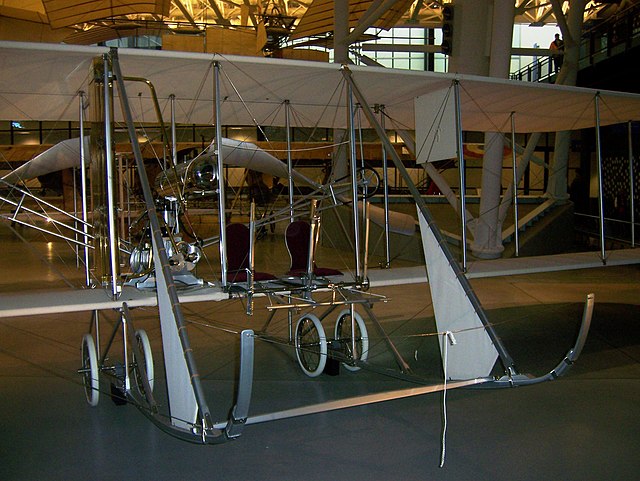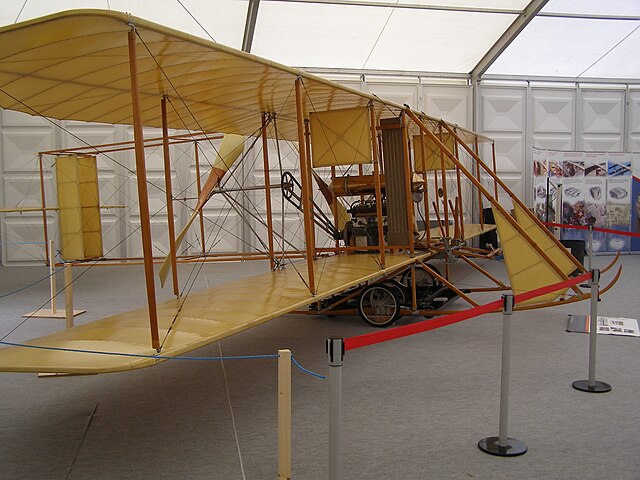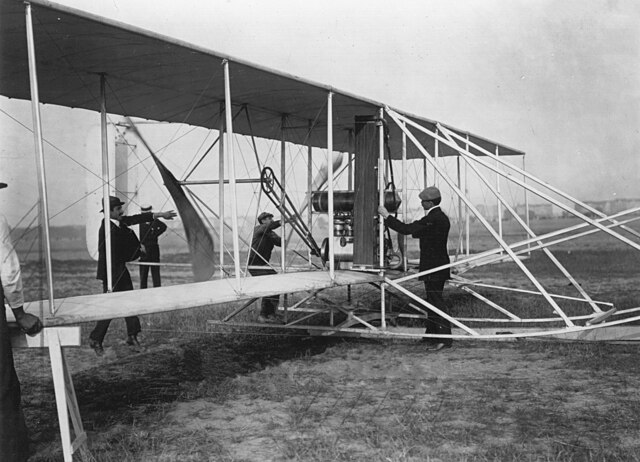The Wright Model B was an early pusher biplane designed by the Wright brothers in the United States in 1910. It was the first of their designs to be built in quantity. Unlike the Model A, it featured a true elevator carried at the tail rather than at the front. It was the last Wright model to have an open-frame tail. The Model B was a dedicated two-seater with the pilot and a passenger sitting side by side on the leading edge of the lower wing.
Wright Model B
Wright Model B reproduction in Steven F. Udvar-Hazy Center.
Wright Model B reproduction on display at the Farnborough Airshow 2008
Wright Modified “B” Flyer at the USAF Museum
The Wright Model A was an early aircraft produced by the Wright Brothers in the United States beginning in 1906.
It was a development of their Flyer III airplane of 1905. The Wrights built about seven Model As in their bicycle shop during the period 1906–1907, in which they did no flying. One of these was shipped to Le Havre in 1907 in order to demonstrate it to the French. The Model A had a 35-horsepower (26 kW) engine and seating for two with a new control arrangement. Otherwise, it was identical to the 1905 airplane. The Model A was the first aircraft that they offered for sale, and the first aircraft design to enter serial production anywhere in the world. Apart from the seven machines the Wrights built themselves in 1906–1907, they sold licences for production in Europe with the largest number of Model A's actually being produced in Germany by Flugmaschine Wright GmbH, which built about 60 examples.
Wright Model A
Three-quarter left front view from below of the Wright Type A Military (Signal Corps No.1) hanging on display in the darkened Early Flight exhibit, Smithsonian National Air and Space Museum
Wilbur Wright flying a Model A in France 1909.
Orville Wright and Model A, Tempelhof Field, Berlin September 1909. This machine is now preserved in the Deutsches Museum, Munich, Germany.








